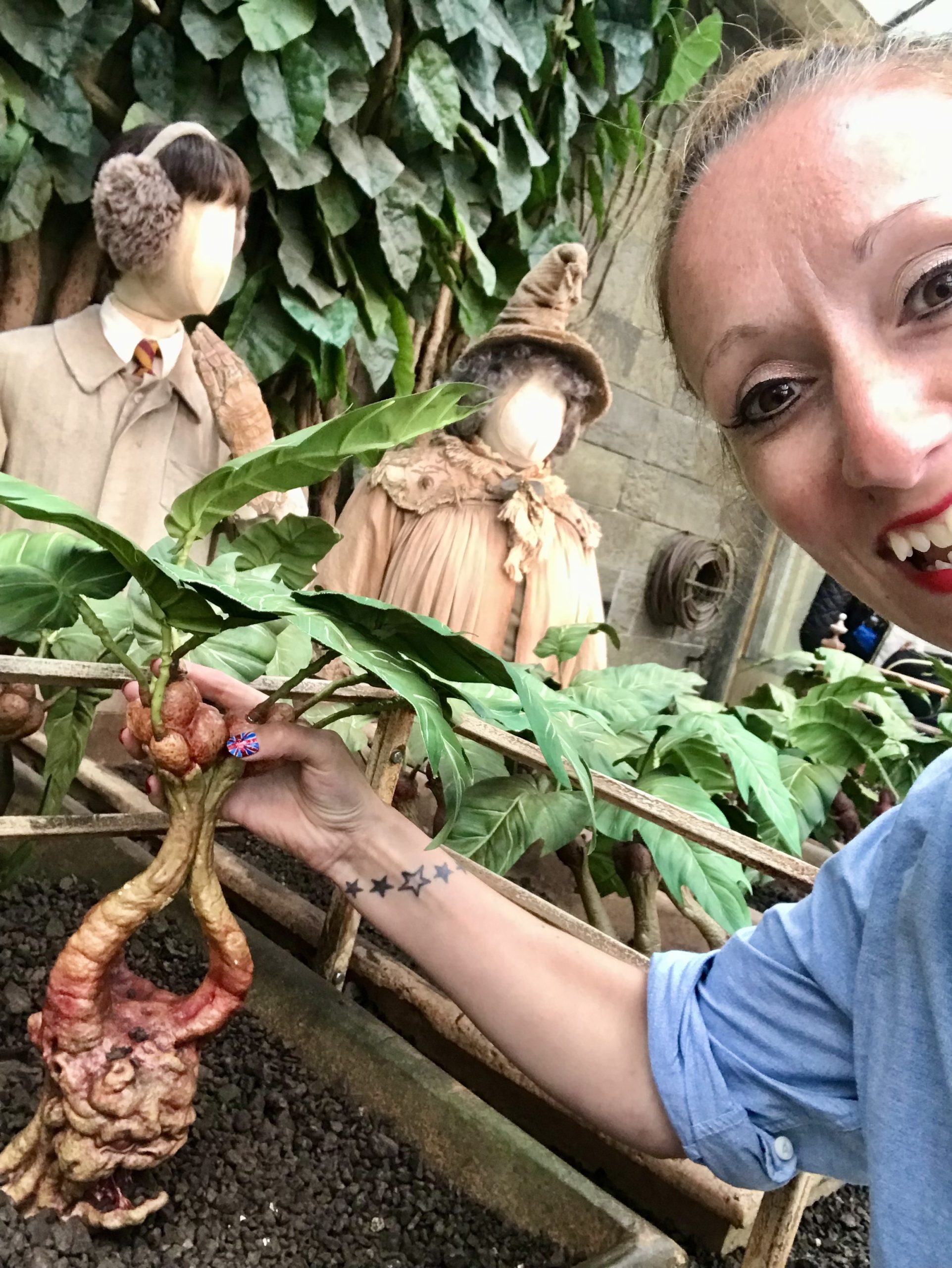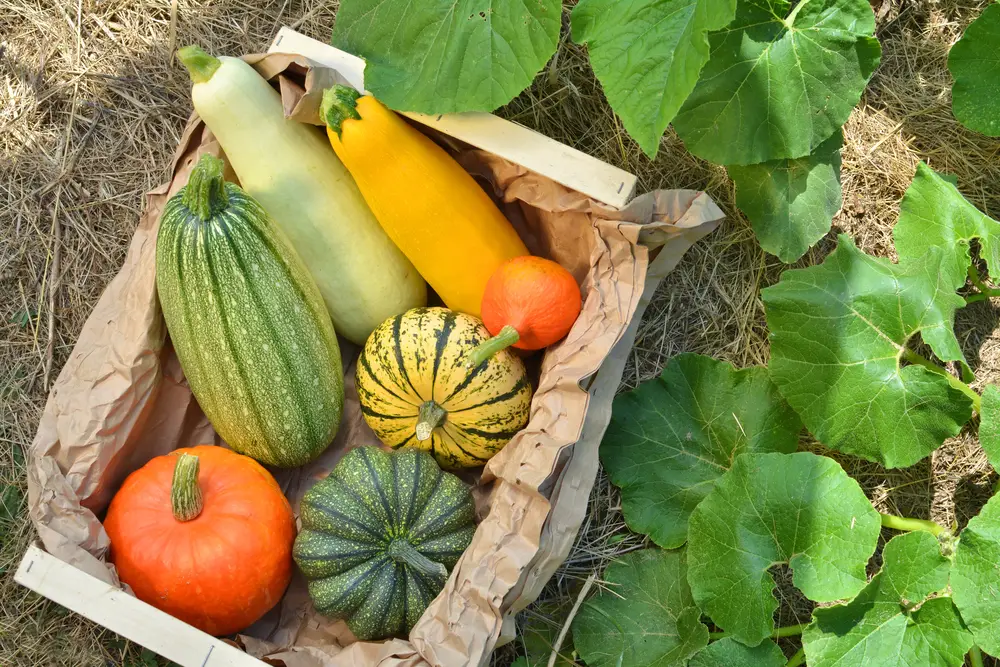Have you ever planted seeds and forgot to label them? All gardeners have made that mistake at least once!
When it comes to squash plants, not knowing what type you have can be a big problem! Some winter squash varieties grow into huge sprawling vines so you need to know where to plant them!
Did you know that you can identify squash plants by their leaves? Their size, shape, color, and texture can give clues to what type of squash they are.
Read on to learn how to identify squash plants by leaves with our easy squash plant leaf identification guide!
How to Identify Squash Plants By Leaves
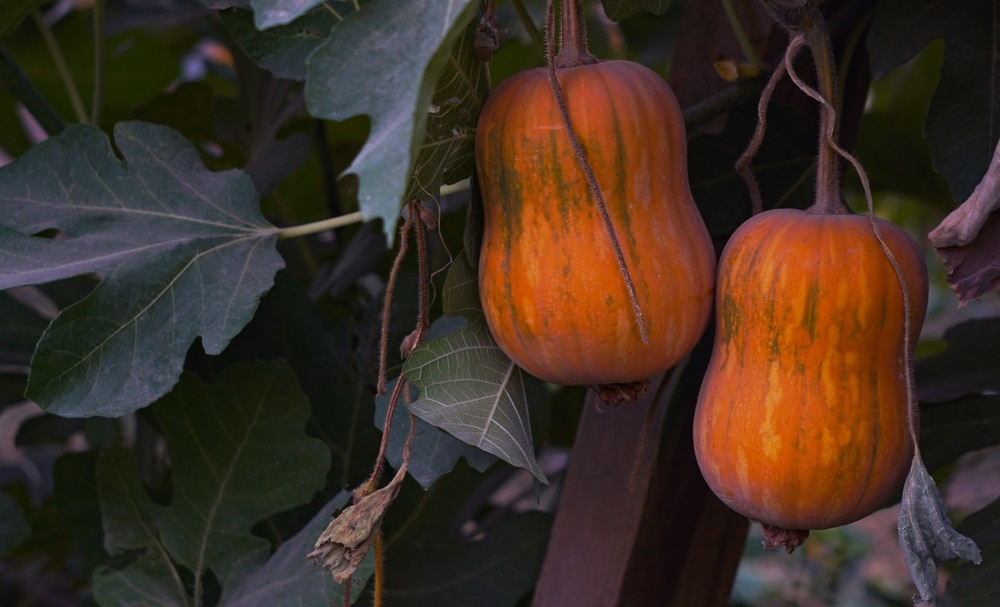
It’s important to know what type of squash plant you have so you know how to successfully care for it.
Tips for Identifying Squash Plants by Leaves
Looking at a squash plant’s leaves is a great way to identify what type of squash you have. But leaf identification alone is not always foolproof. Identifying young squash seedlings by leaves can be difficult, for example. You can also use other ways to identify squash plants, including:
- Plant size
- Bush or vine growth
- Flowers
- Stems
- Fruit
If you are identifying a squash plant by its leaves make sure to pay close attention to the leaves’
- Color
- Texture
- Shape
- Size
If in doubt, refer to the photos in this guide to help you identify squash plants by their leaves.
Looking at your squash plant’s leaves will also help you identify and prevent diseases such as powdery mildew and bacterial wilt.
Squash Plant Characteristics: Leaves
From big and round to smaller and spiked, squash plants have distinctive leaves.
Leaves play an important role in converting sunlight into energy that the plants use to grow. This is photosynthesis. Without this process, squash plants wouldn’t be able to grow!
Most squash leaves have prominent veins that run from the base of the leaf to the edge.
Squash leaves grow in an alternate arrangement along the stem. This means they grow out of the stem at different points rather than opposite each other.
There is a wide variety of leaf shapes, textures, and appearances which can make identifying squash plants difficult. But fear not, this squash leaf identification guide is here to help!
Identification of Squash Plants
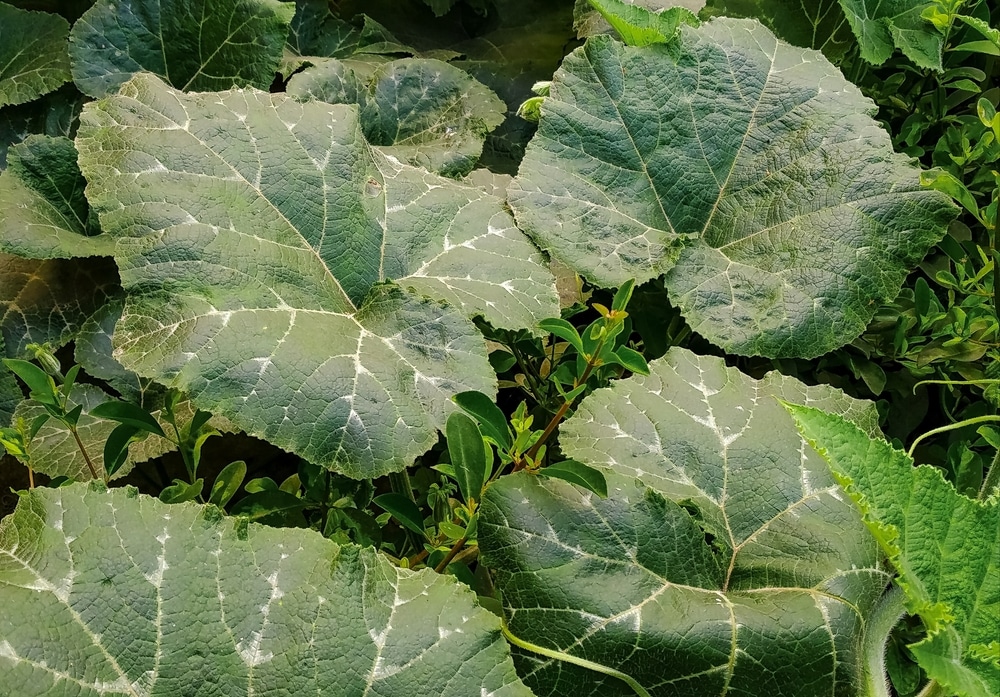
Squash plants have characteristically big leaves that make them a distinct feature in the garden!
There are two main types of squash:
- Winter Squash: includes delicious varieties like butternut, acorn, and spaghetti
- Summer Squash: includes tasty types such as zucchini, pattypan, and crookneck
Need to identify winter squash varieties by their leaves? Or interested in identifying summer squash varieties by leaves? Looking at different features of the leaves helps with identification. These features include:
- Color
- Texture
- Serrated leaves
- Smooth leaves
- Lobed leaves
Of course, there can be lots of variation within each category. But, by investigating these features you can learn how to identify squash plants by their leaves.
Let’s dive in!
Squash Leaf Color Identification
Most squash leaves are a vibrant green color. But shades vary depending on the variety. Some can be light green, others mottled, some can even be purplish-green!
The color of a squash leaf isn’t always a good indicator of its variety. Sometimes if there is something wrong with a squash plant, its leaves can become pale or even yellow. Too much sun or not enough sun can also affect the color of the leaves.
But don’t worry there are other characteristics to help identify a squash plant by its leaves.
Squash Leaf Texture Identification
You may have come across some of these words used to describe the texture of different squash leaves:
- Smooth
- Velvety
- Crinkly
- Rough
- Sandpaper
- Fuzzy
- Prickly
The texture of a leaf can be a helpful clue in identifying the squash plant.
Smooth leaves are common in butternut, acorn, and some Pepo varieties.
A rough texture is often seen in spaghetti squash, zucchini, and other summer squashes.
Identify Squash Plant by Serrated Leaves
Serrated means notched, like the teeth on a saw.
Look at the edges of the leaves, do they have little notches? This could point towards varieties like zucchini or acorn.
Identify Squash Plant by Smooth Leaves
Not all squash have spiky or fuzzy leaves. Some are smooth, waxy, or even velvety.
Check your plant’s leaves. If they are smooth, it can indicate butternut or buttercup squash varieties.
Identify Squash Plant by Lobed Leaves
Lobed leaves are common in many squash varieties. There can be three to seven deep lobes on their leaves. Some have deep lobes, others have shallow, less pronounced lobes.
Some summer squash have deeply lobed leaves. Zucchini, for example, has distinctive lobed leaves with serrated edges.
Acorn squash have uniquely lobed leaves that look like an oak leaf.
Popular Varieties
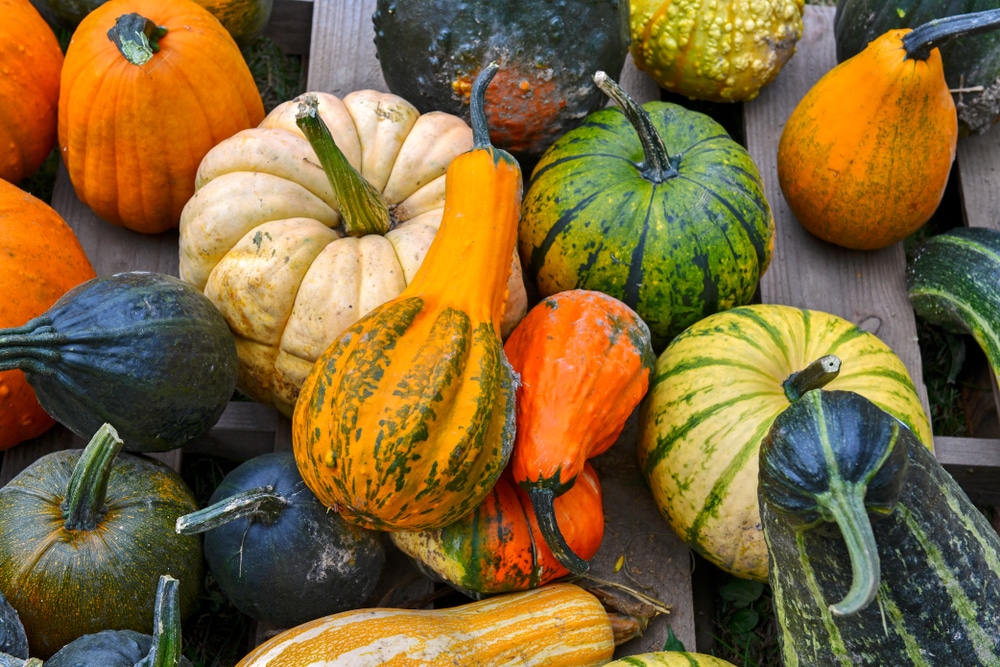
Do you need to differentiate between acorn and spaghetti squash plants by their leaves? Do you want to know how to distinguish between zucchini and butternut squash leaves?
Use this quick, easy-to-follow guide below to identify different squash varieties by their leaves!
Zucchini Leaf Identification
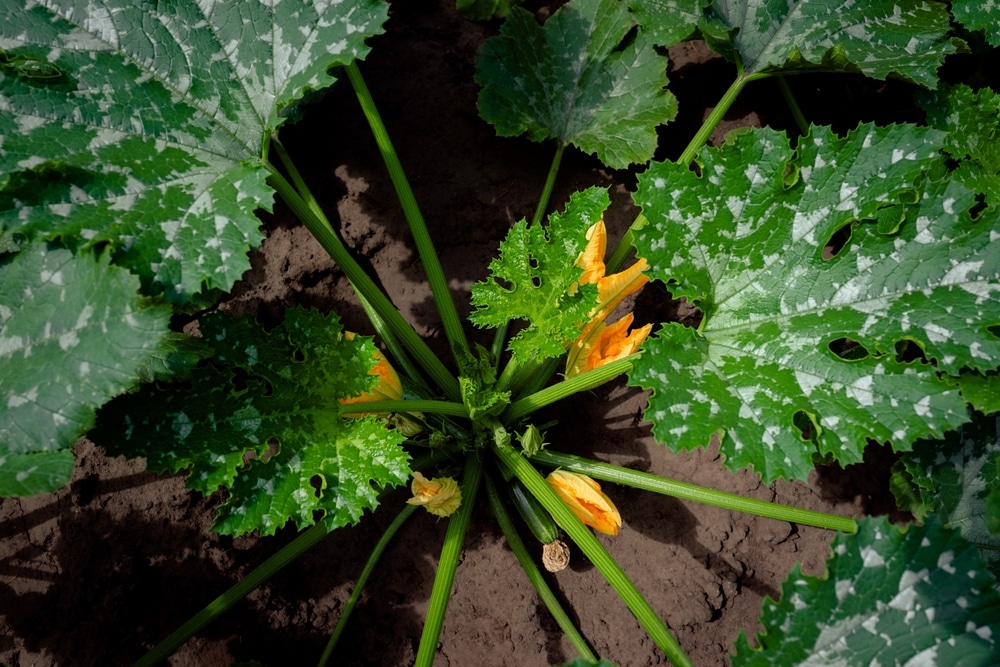
Here’s how to identify zucchini squash plants by their leaves:
- Size: Large
- Shape: Notched, star-shaped
- Color: Mottled with silvery and light green on dark green
- Texture: Rough
- Edges: Serrated
Butternut Squash Leaf Identification
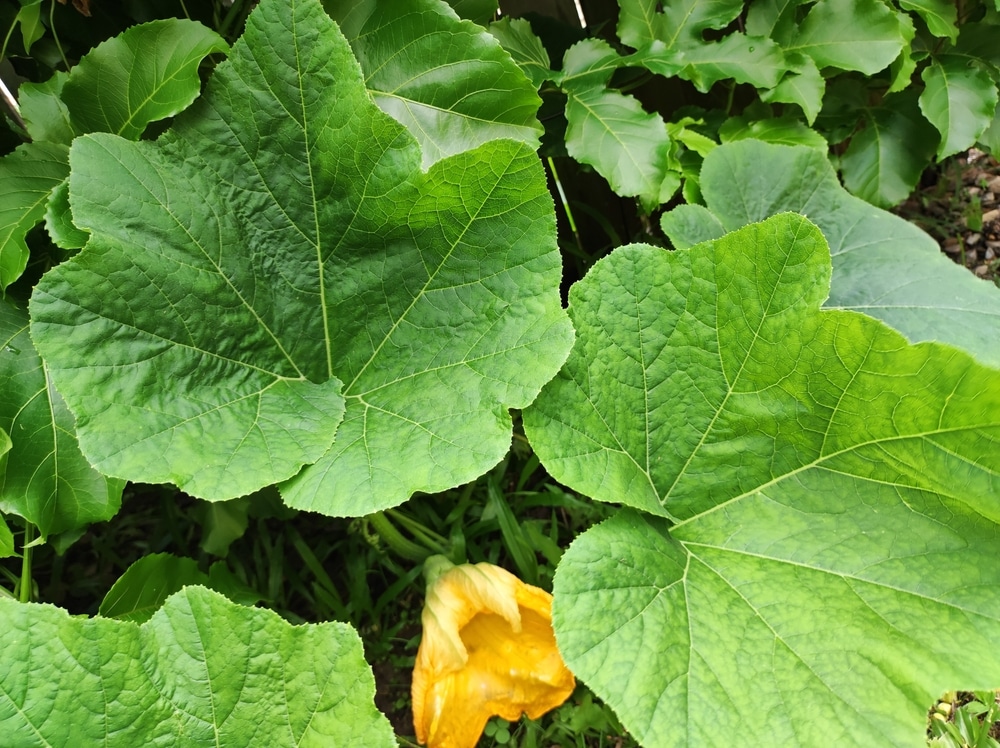
Here’s how to identify butternut squash plants by their leaves:
- Size: Large
- Shape: Lobed, often 3 to 5 lobes
- Color: Green mottled with silvery-white spots
- Texture: The top of the leaf is smooth and velvety, and the bottom of the leaf has fuzzy rough hairs
- Edges: Slightly serrated
Acorn Squash Leaf Identification
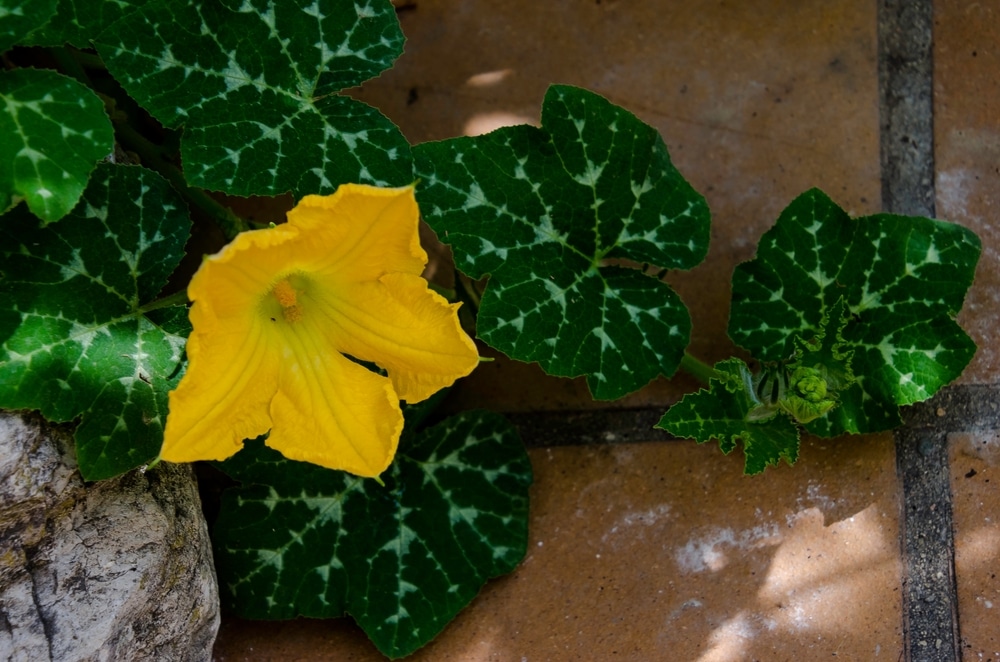
Here’s how to identify acorn squash plants by their leaves:
- Size: Large
- Shape: Lobed, almost like an oak leaf
- Color: Dark green
- Texture: Smooth
- Edges: Serrated
Spaghetti Squash Leaf Identification
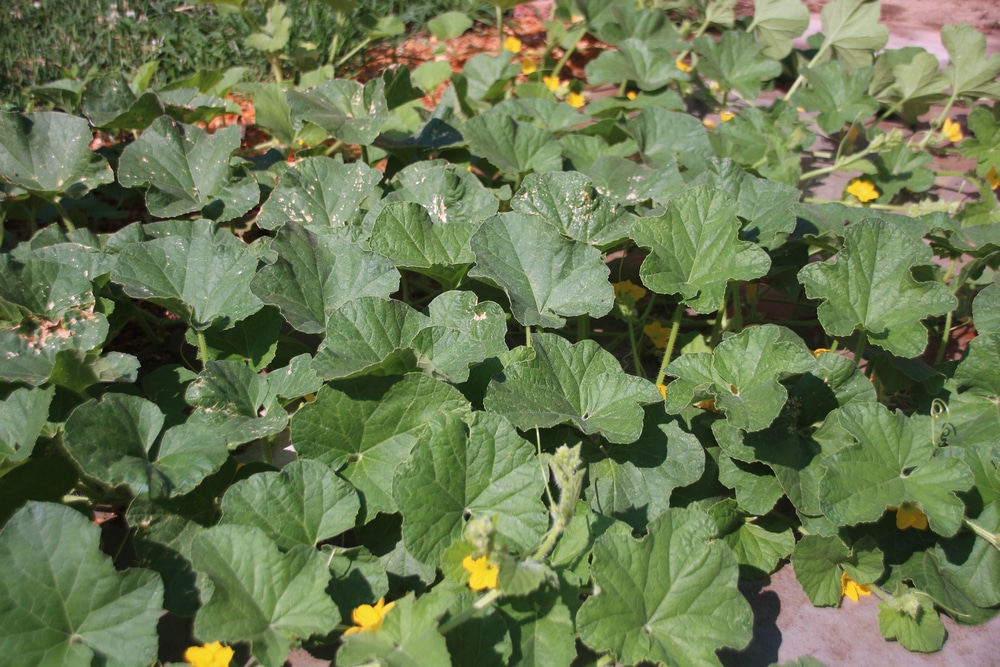
Here’s how to identify spaghetti squash plants by their leaves:
- Size: Large
- Shape: Lobed, broad heart-shaped
- Color: Green, sometimes gray-green
- Texture: Rough with fuzzy hairs
- Edges: Smooth or slightly serrated
Buttercup Squash Leaf Identification

- Size: Large
- Shape: rounded lobes
- Color: Dark green
- Texture: Smooth
- Edges: Serrated, irregular
Diseases
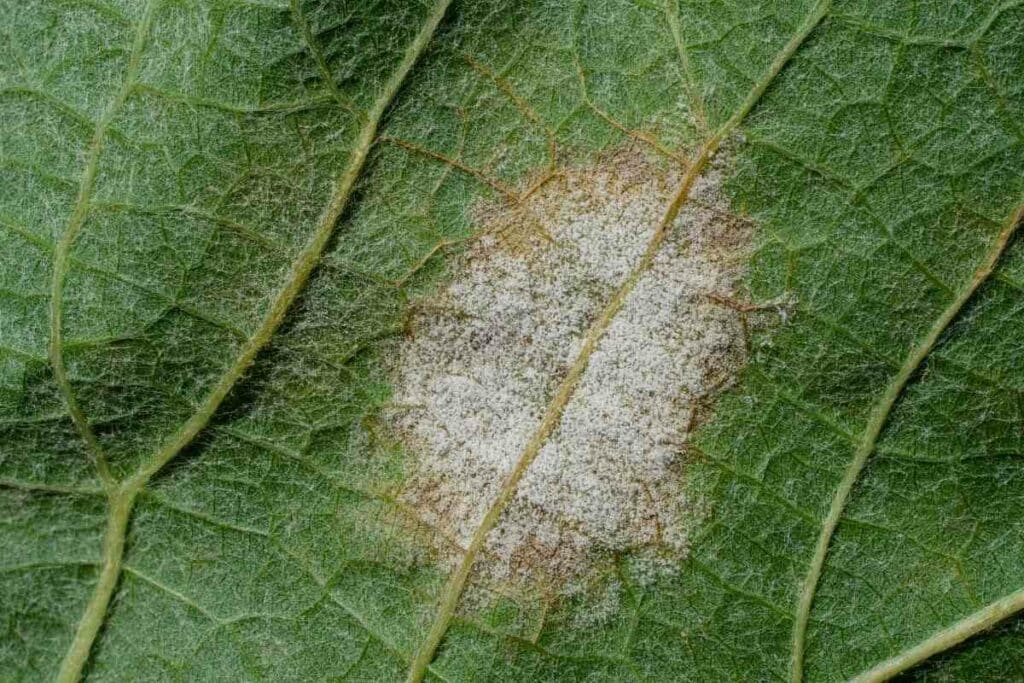
Unfortunately, squash plants are prone to some diseases. Identifying and quickly addressing the issues will ensure you still get a good squash harvest.
Here are some tips on how to identify and treat two common diseases that affect squash plants.
Identify Squash Powdery Mildew by Leaves
You may have seen squash plant leaves with white spots and wondered what it is. Well, it might be powdery mildew.
Often powdery mildew starts as small spots and then a powdery white mold begins to grow over the whole leaf. The powdery spots can also be a gray color.
It usually starts in late summer and can continue to develop until the fall.
The white spots appear on both sides of the leaves and often on the stems as well.
If left untreated, powdery mildew:
- Affects your squash plants’ health
- Limits growth
- Hinders crop production
How To Treat White Powdery Mildew
- Space: Make sure you give your squash plants plenty of room to grow. Crowded plants have restricted airflow which allows diseases to develop. Squash plants need lots of space to breathe!
- Be Quick!: powdery mildew spreads quickly so make sure you address it as soon as you see it
- Remove Affected Leaves: if the powdery white spots are only on a few leaves, remove them. To avoid spreading the disease, dispose of the infected leaves, do not put them in your compost pile
- Topical Treatments: Use organic plant sprays to tackle powdery mildew. It also helps fight other pests such as mites
- Neem Oil: this oil comes from the neem tree and is very effective in treating powdery mildew. You can buy neem oil or an easy ready-made spray to use on your squash plants
- Vinegar spray: a cheap and easy method with something you have in your cupboard! Mix a solution of 4 tablespoons of vinegar in 1 gallon of water. Use a spray bottle to spray your squash plant every 3 days
Identify Squash Bacterial Wilt by Leaves
Have your squash plant leaves ever suddenly wilted? It could be bacterial wilt.
This disease presents in the following stages:
- Green leaves suddenly droop
- Wilted leaves turn yellow
- Leaves become brown and die
How To Treat Bacterial Wilt
Unfortunately, there is no cure for bacterial wilt. But, you can take the following steps to either prevent or limit the spread of the disease.
- Pest Control: Cucumber beetles is a known pest that spreads bacterial wilt. Controlling them helps limit infections. Use an organic plant spray to prevent pest infestations
- Remove Affected Plants: once you have identified bacterial wilt, be sure to quickly remove any affected squash plants. Make sure to dispose of the infected squash plants in the garbage, do not put them in your compost pile
